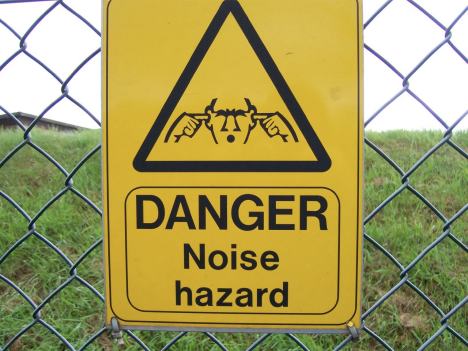
“Noise pollution” sounds like a metaphor, but the EPA recognizes it as an actual form of pollution. It can be serious, too — excessive noise for long periods of time has been shown to cause not only the predictable hearing problems, but also stress related conditions like heart disease and ulcers. Noise pollution has even been linked to low birth-weight babies and susceptibility to toxins.
Factory noise pollution
The EPA is usually concerned with traffic and other public noise, so noise on the factory floor is the business of OSHA. In the U.S., workers can be exposed to noise levels averaging up to 85 decibels all the time. 90 decibels is okay for 8 hours, and there are other limits up to 115 decibels, which is acceptable for 15 minutes at a time, as long as the average isn’t over 85. Once the average noise level hits 85 decibels, there must be a program in place to protect the workers’ hearing.
Just what noise level is 85 decibels? It’s the sound of a milling machine at a distance of 4 feet, or a typical vacuum cleaner or motorcycle — normal factory noise levels. A printing press hits 95 decibels. A jackhammer comes in at 130 decibels, right under your typical rock concert. At 140 decibels, the average rock concert constitutes an illegally noisy work environment.
Solutions
OSHA recommends trying first to reduce noise at the source. A quieter machine or more distance between the noisy machines and the human workers (thank you, automation!) is the first line of defense. If the problem can’t be solved in this way, we can move on to personal hearing protection such as earplugs or earmuffs. Hearing tests should be conducted every two years for all workers in noisy environments.
Notice that the focus is on hearing loss. OSHA isn’t considering the stress of constant noise, or the stress of having people creep up on you because you’ve got earmuffs on, either. Workers miss warning shouts when they have noise protection in place, and the chance of accidents rises when people are stressed and when they don’t have the full use of their senses.
Engineering for quiet — “buying quiet” — can be cheaper than losing productivity among workers. Obviously, considering noise production when buying new machines is a good plan. Rexroth is at the forefront of industrial noise reduction, and makes a point of ensuring that new, low noise components will work with older Rexroth devices for ease of replacement. However, you can often reduce noise from existing machines by enclosing or muffling them, reducing vibration with damping materials, or reducing speed.
If quieter conditions aren’t obtainable, rotating workers out of high-noise areas may be the best solution. Providing earmuffs for machine operators and having them spend half their workday in a quieter location can help.
